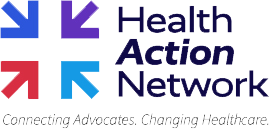A quick roundup of the issues driving the healthcare reform conversation.

Week in Review
WATCH OUT FOR COSTLY LEGISLATION BETWEEN ELECTION, SWEARING IN
Quick takeaway: In the months leading up to next year, the House and Senate have a slew of spending bills to pass in order to keep the government funded. Economist Ike Brannon highlights the potential negative ramifications of advancing PBM legislation that will actually increase costs rather than produce savings.
Digging Deeper: PBM reform is being considered as a financial offset to other costly legislation; however, these anti-PBM bills do not actually save the government money or lower drug costs.
What it means: Brannon discredits claims that an anti-PBM provision that was attached to a tele-health provision recently within the Ways and Means Committee would save money – setting the stage for future scenarios where costly provisions are also added to other must-pass legislation.
HOSPITALS CHARGED HEALTH PLANS ON AVERAGE 254% MORE THAN
Quick takeaway: A new report from the RAND Corporation shows hospital’s prices rose from 2020 to 2022, with health plans’ payments to hospitals amounting to on average 254% of Medicare rates in 2022 – up another 11% from 2021.
Digging Deeper: While hospitals claim they charge health plans more to offset losses from treating Medicare and Medicaid patients, the report highlights hospitals’ market share as a critical factor behind the rise in commercial upcharge.
What it means: As prices for commercial insurance remain high, look to employers and employee groups to continue to raise concern with unreasonable hospital billing practices, which are fueling healthcare inflation.
HOW MUCH IS MEDICARE SPENDING ON NEW DIABETES AND OBESITY DRUGS?
Quick takeaway: Almost a third of Medicare beneficiaries have diabetes – which has meant an uptick in the use of GLP-1 drugs, also used for weight loss.
Digging Deeper: New research from the Kaiser Family Foundation shows that spending on three of the most prominent diabetes medications – Ozempic, Rybelsus, and Mounjaro – reached $5.7 billion in 2022. The Medicare Trustees Report also found that drug expenditures in 2023 were significantly higher due to the unexpected rapid increase in the use of these drugs. Separate research from the American Enterprise Institute shows how Medicare spending likely changed due to the increased utilization of these drugs:

What it means: While the total fiscal impact of these drugs for Medicare remains to be seen, the combination of intense utilization, new uses, and high prices for these treatments is likely to place tremendous pressure on Medicare spending and Part D premiums.
PROVIDER NETWORKS CONTINUE TO GROW UNDER NO SURPRISES ACT
Quick takeaway: Recent data highlights that the No Surprises Act (NSA) has led to more doctors and specialists participating in health plans’ provider networks – an important outcome which increases access for patients to affordable care.
By the numbers: Approximately 67% of health plans announced increased provider networks since the enactment of the NSA. Importantly, this has coincided with zero health plans reporting decreases in provider networks.
What it means: This growth in provider networks comes despite an aggressive legal campaign launched by certain providers seeking to undermine the NSA’s vital consumer protections.
Spotlight

| You can keep up with the latest by following the Health Action Network on X and by liking us on Facebook. And, be sure to check us out on LinkedIn, too. As always, let us know if there’s something you’d like to see covered in a future newsletter. |
The Health Action Network includes everyday Americans—families, workers, businesses, patients, providers, neighbors, and friends. We are working together because we support market-based solutions that offer better healthcare choices and help build a stronger economy. The Health Action Network is an Elevance Health, Inc., initiative.
